Be Aware › Beavers

Welcome to Beaver Country
Beavers can be found along creeks and streams, as well as in lakes and reservoirs. They cut trees to build dams and water diversions, sometimes creating large ponds. Lodges of sticks and mud are often constructed in these ponds and are used by beavers for shelter, food storage, and the rearing of young.
Natural beaver activity often brings them in conflict with humans. They are known to dam irrigation canals and road culverts, leading to maintenance and repairs. Beavers occasionally dine on landscaped trees and cause flooding damage to roads or private property.1
Beaver Facts
The American beaver, Castor canadensis, is a large rodent that occurs throughout most of North America. Beavers are mainly nocturnal but are occasionally seen during the day. They do not hibernate, but may become less active during the winter.
Their soft pelts range in color from nearly black, brown, reddish-brown to blonde. Adults can weigh up to 60 pounds or more. Their most distinctive feature is their broad paddle-like tail, which they use like a rudder to navigate their watery environment. They have four prominent bright orange incisors, two on top and two on the bottom. These teeth never stop growing; so they must constantly file them down by gnawing on trees and grinding their teeth together.
Females may have a litter of one to nine young each year during the spring or early summer. Beavers are herbivores, eating primarily woody material, such as aspen, in the winter, and green aquatic and riparian vegetation in the summer.
Beavers once numbered in the millions throughout North America. Highly prized for their lustrous pelts, beaver populations were decimated by fur trapping during the 1700s and 1800s to supply a worldwide demand for warm and fashionable accessories. Beavers have since re-colonized a large portion of their former range; however loss of habitat due largely to competing land uses has severely limited populations in many areas throughout Utah.
Legal Status
Beavers in Utah are considered furbearers and are classified as protected wildlife. They can be taken with a license in an annual trapping season. The Utah Division of Wildlife Resources is responsible for their management. Beavers can be taken from a site of conflict at any time with a special permit from the Utah DWR.
Remember:
- Do not allow pets to chase or harass beavers.
- As with all wildlife, observe beavers from a safe distance.
Protecting Trees and Plants
Most beaver conflicts can be solved or addressed by being proactive and taking the beaver’s needs and behavior into account when planting landscaping.
In Utah, aspen, cottonwood and willow are a beaver’s preferred food. Birch, maple, ash, alder and other woody plants are also utilized when available. If any of these are found on your, property, here are a few tips to protect them against beavers:
- Fence individual trees and bushes. Heavy, 12.5-gauge welded wire fencing to 4′ (or higher in areas of heavy snow) will prevent beavers from cutting down trees. Leave a 1′ gap between the fence and tree to allow the tree to continue growing.
- Another option to protect your trees is to mix 5 ounces of mason sand with 1 quart of exterior latex paint and apply it to the first 3 feet of the trees.
Preventing Flooding
Many plant and animal species benefit from the expansion of wetland habitat as a result of beaver dams, including a wide variety of fish, small mammals, big game, waterfowl and other birds. Beaver dams also provide a host of benefits to humans. They capture spring runoff water behind their dams, which slowly leak water, helping to ensure that a stream doesn’t go dry during late summer.
Beaver Sign, Identify Damage and Conflict Prevention
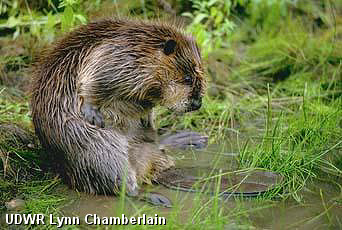
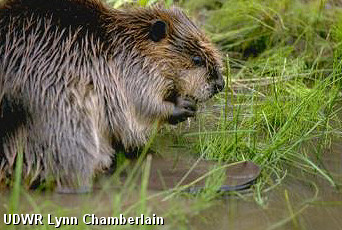
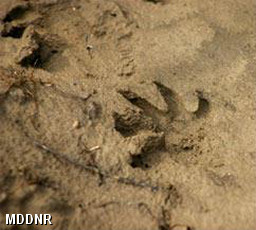
Tracks
Beaver tracks: The front foot is approximately 2–3 inches long with the hind foot being 4–7 Inches long. The tail drag print may also be visible.
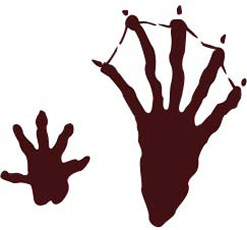
Signs
Lodges of sticks and mud are often constructed in ponds, rivers, streams and creeks. Beavers are herbivores who eat primarily woody material. Look for chew marks on tree trunks and felled trees.
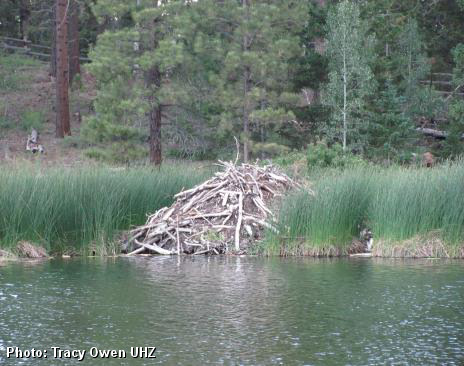
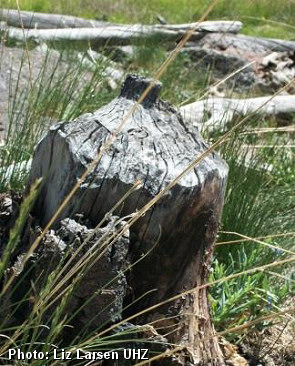
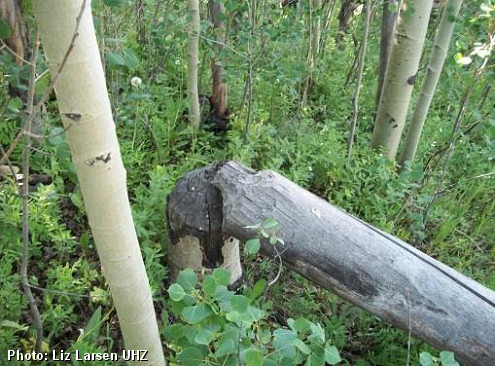
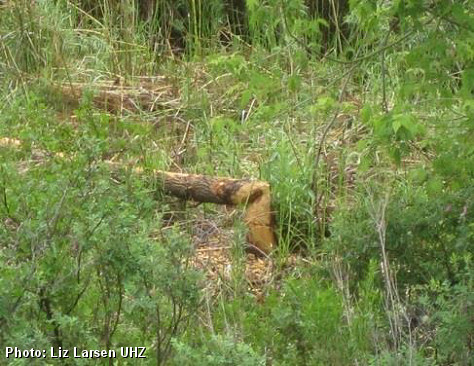
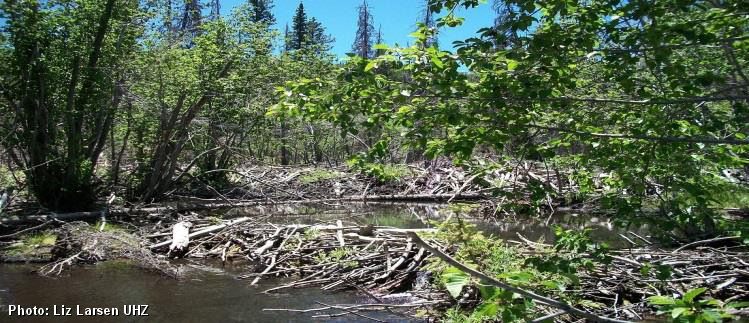
Avoid Conflicts
Trapezoidal culvert protective fence
Create a culvert protective fence in a trapezoid pattern as shown below.
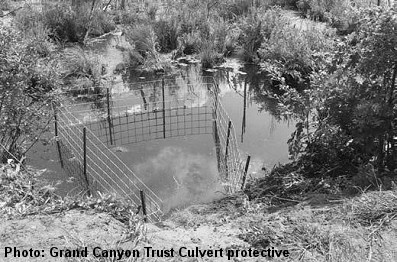
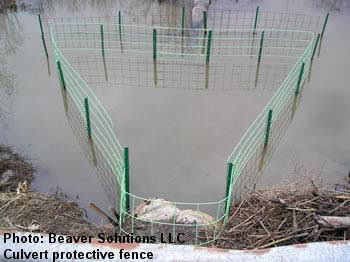

Fig. 1 – Trapezoidal culvert protective fence. Used with permission from Beaver Solutions LLC.
Pond Leveler
A simple pond-leveling device can be an easy to build solution to flooding from beaver dams:
- A culvert pipe is installed in an intact beaver dam, and the inlet is sunk into the upstream beaver pond.
- A cage of heavy welded wire is constructed to prevent beaver from plugging the intake.
- The outlet end of the pipe can be set higher or lower in the dam depending on the level you wish to maintain in the pond.

Fig. 2 – Flexible Pond Leveler. Used with permission from Beaver Solutions LLC.
A pond leveler can be combined with a culvert protective fence in situations where the height of the roadbed is sufficient that a small beaver pond does not pose a threat. Ideally the pond should be left as large as is feasible without creating conflicts.

Fig 3 – Fence and Pipe Diagram. Used with permission from Beaver Solutions LLC.
Drawings and Diagrams by Beaver Solutions LLC — Pioneering best management practices for beaver, with information and DVDs available showing how to install a variety of flow control devices and protective fencing. — www.beaversolutions.com
If you have conflicts with beavers that cannot be resolved with these non-lethal tips, alert the Utah Division of Wildlife Resources office near you.
References
- Thank you to Jeremy Christensen, Utah Forest Program Wildlife

